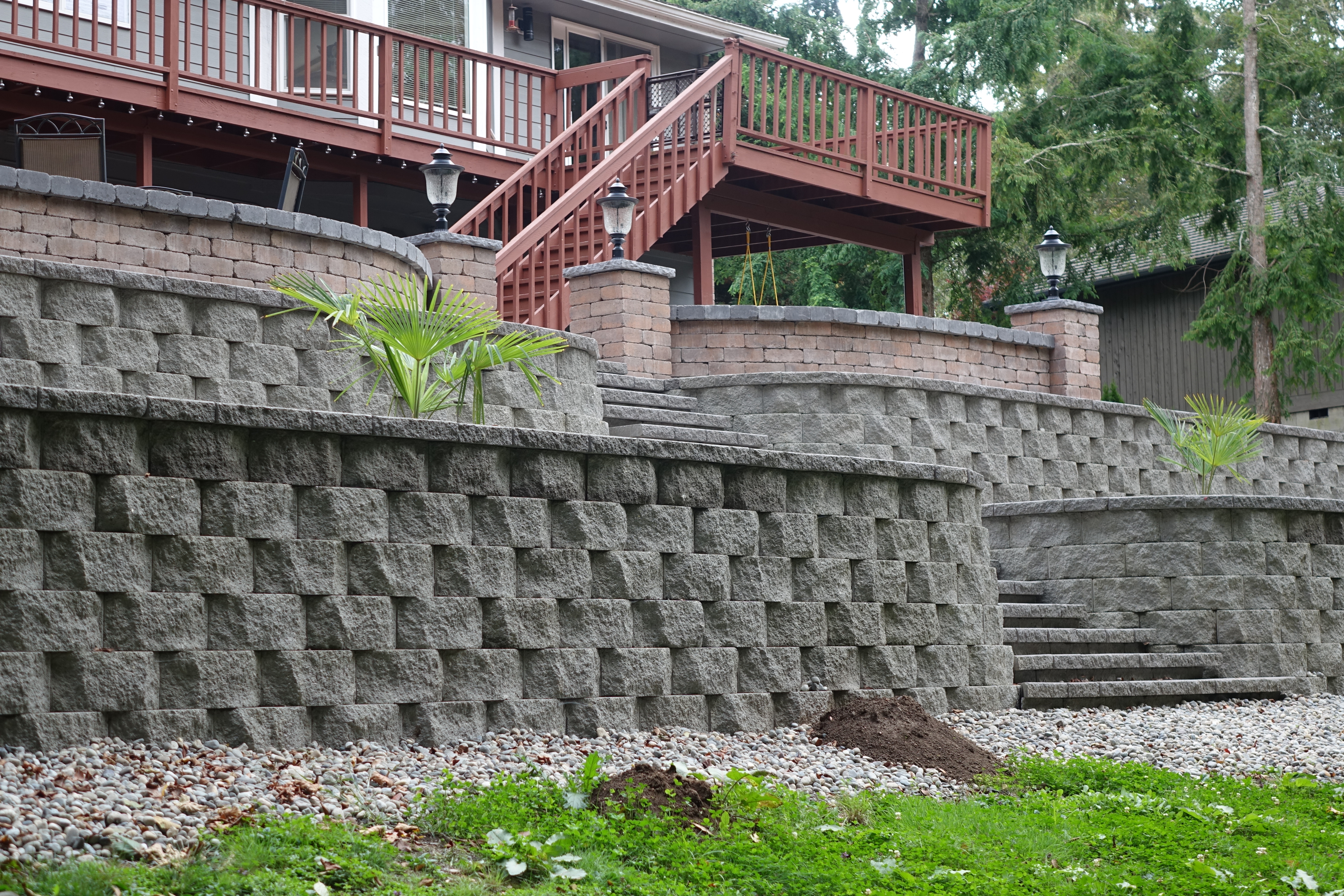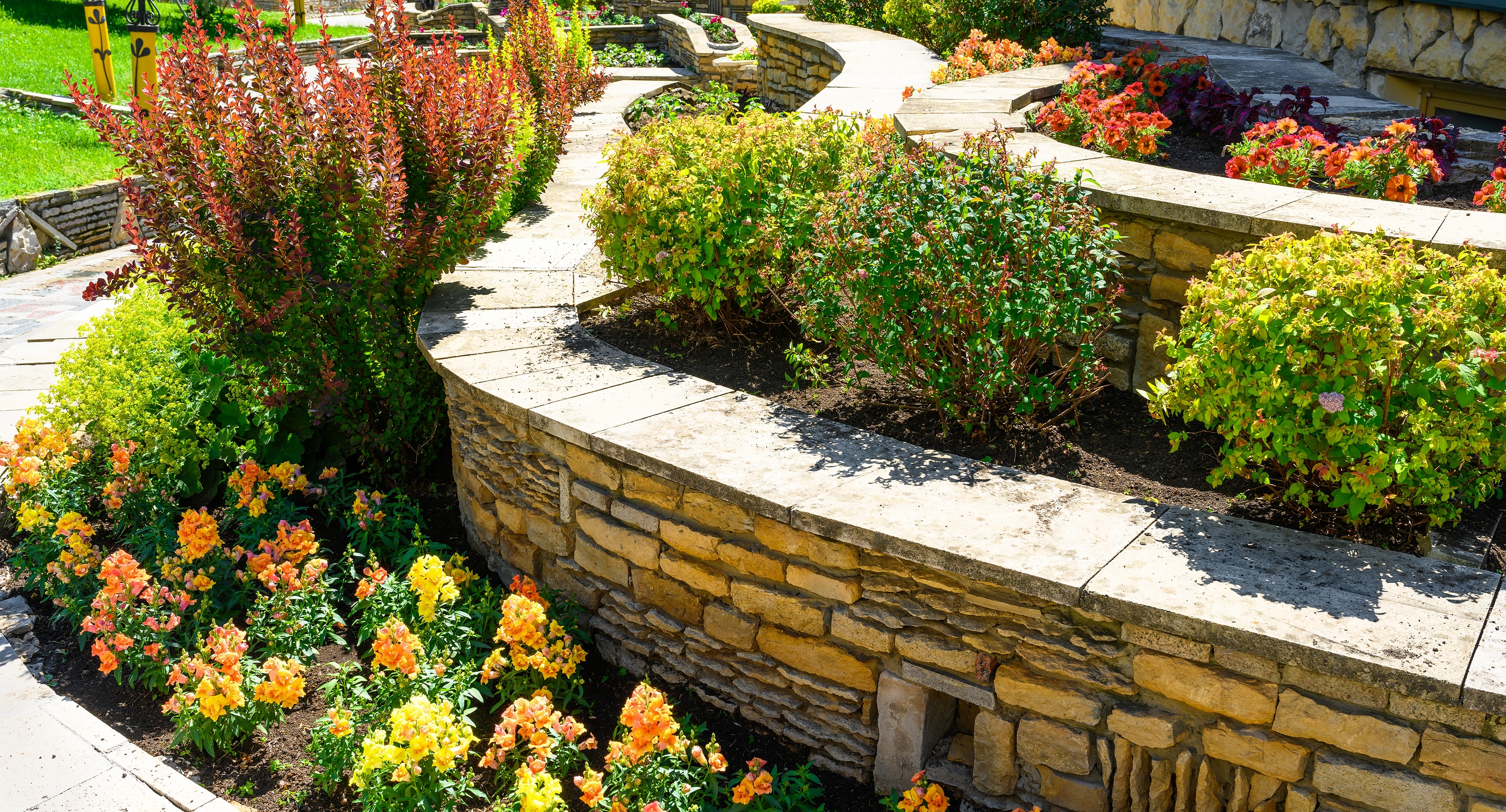The Vital Overview to Recognizing the Performance of Retaining Walls
When it comes to managing sloped landscapes, retaining walls are vital. What kinds of retaining walls are available, and just how do you select the appropriate materials?
What Are Retaining Walls and Their Objective?
Retaining walls are important frameworks created to hold back soil and avoid disintegration, specifically on sloped landscapes. When you think about a preserving wall surface, consider its function in managing water runoff, which can erode dirt over time.
Additionally, retaining walls can create useful rooms in your yard. By leveling out a sloped location, you can gain much more useful outside space for horticulture, patio areas, or play locations. The layout and materials you choose can improve your residential or commercial property's looks, making it visually appealing.
Eventually, understanding the purpose of retaining walls aids you appreciate their value in landscape monitoring (OKC Precision Retaining Walls). They not only protect your home however also contribute to the general charm and performance of your outside area
Kinds Of Retaining Walls: A Review
When it concerns taking care of soil and water runoff in your landscape, knowing the various sorts of retaining walls can assist you make an informed choice for your property. Gravity walls depend on their weight to hold back dirt, making them a strong option for smaller sized slopes. Cantilever walls, on the other hand, make use of a lever-like style, which permits them to sustain a lot more substantial lots with much less material. For more facility surfaces, anchored walls provide extra security by utilizing cable televisions anchored into the ground. There are modular block walls, which use adaptability and ease of setup with interlocking blocks. Each kind has its benefits and applications, so consider aspects like dirt problems, elevation needs, and aesthetic preferences before making your choice. Comprehending these choices will certainly encourage you to enhance your landscape efficiently while avoiding disintegration and managing water overflow.
Key Products Used in Retaining Wall Building And Construction
To produce a sturdy and reliable retaining wall surface, choosing the best materials is necessary. Precast concrete blocks offer versatility in design, while poured concrete provides a smooth appearance.
Wood is one more alternative, especially for smaller sized walls, yet keep in mind it may not last as long due to decay. Steel and gabion walls, which use cord mesh filled up with rocks, are likewise efficient for certain scenarios.

Design Factors To Consider for Reliable Retaining Walls
Creating an effective retaining wall surface involves mindful consideration of a number of essential aspects, as the wall surface should endure both vertical and side forces. Examine the soil type and its properties; cohesive dirts behave differently than granular ones. You'll also wish to determine the height of the wall surface, as taller walls call for more durable layout solutions.
Next, take into consideration water drainage. Correct water drainage protects against water buildup behind the wall, decreasing stress and prospective failing. Integrate weep openings or water drainage pipes for efficient water monitoring.
Also, think of the products you'll utilize. Different materials, like concrete, stone, or lumber, offer varying toughness and appearances.
Ultimately, do not forget regional guidelines and codes. They commonly dictate layout requirements and building and construction techniques. By resolving these factors to consider, you can ensure your retaining wall surface is not just practical however also long lasting and risk-free.
Applications of Retaining Walls in Landscaping and Building
Retaining walls offer a vital function in both landscaping and building and construction, as they aid handle modifications in elevation and stop soil erosion. In landscaping, you can utilize them to produce stunning terraced yards, enabling you to optimize your exterior area while adding aesthetic passion. They also assist specify locations, such as pathways or blossom beds, improving your landscape's overall style.
In construction, retaining walls offer stability to structures improved sloped land, assuring safety and security and sturdiness. They're typically used in roadways and business properties to handle earth movement and drain efficiently. By preventing soil from changing, retaining walls safeguard foundations and maintain the stability of your building tasks.
Whether you're aiming to boost curb appeal or guarantee structural security, retaining walls supply practical remedies that can substantially profit your landscape and building ventures. Embrace their adaptability to attain both visual and functional objectives.
Upkeep Tips for Long-Lasting Retaining Walls
To maintain your retaining walls in great form, normal evaluations and prompt fixings are important. You also need to assure appropriate water drainage services to avoid water build-up, which can compromise the framework. Managing plant life around the walls will help preserve their stability and expand their lifespan.

Normal Evaluations and Repair Work
While you may think your retaining wall surface can stand solid on its very own, routine evaluations and prompt fixings are important for its longevity. Inspect your wall at the very least two times a year for fractures, protrudes, or indicators of wear. Try to find any type of moving in the dirt surrounding the wall surface, as this can indicate deeper concerns. If you detect a problem, address it promptly; a small split can swiftly transform into a considerable structural failing. Fixing damaged sections promptly can save you money and stop comprehensive damages down the line. In addition, keep the area around the wall surface clear of particles to avoid moisture accumulation. By being aggressive about maintenances, you'll ensure your retaining wall continues to be tough and useful for years ahead.
Correct Drainage Solutions
Reliable drain is crucial for preserving the honesty of your retaining wall, as water buildup can lead to significant structural concerns. To assure correct drainage, set up weep openings at regular intervals along the wall surface. By applying these options, you'll improve the durability and stability of your retaining wall, guarding it versus prospective damages caused by water accumulation.
Vegetation Monitoring Strategies
Healthy greenery can play an essential function in the long life of your retaining wall. To guarantee its effectiveness, you'll desire to take care of the plant life around it thoroughly. Beginning by choosing deep-rooted plants that aid support the soil without creating pressure on the wall surface - OKC Precision Retaining Walls. Routinely inspect for intrusive varieties that can undermine your wall surface's integrity.
Maintain the greenery trimmed to prevent excess weight and preserve correct drainage. It's crucial to stay clear of overwatering, as extreme dampness can wear down the wall's structure. Additionally, think about utilizing compost to keep soil dampness while reducing weed growth. By implementing these plants monitoring methods, you'll support your retaining wall surface's longevity and improve the surrounding landscape's charm.
Typical Issues and Solutions for Retaining Walls
When it comes to retaining walls, dirt erosion and site drain problems can trigger significant frustrations. You require to ensure your wall surface is appropriately made to stop erosion and has an effective water drainage system in area. Let's discover some typical issues and their services to maintain your retaining wall surface strong and functional.
Soil Disintegration Avoidance
Dirt erosion can be a significant difficulty for retaining walls, specifically if not effectively dealt with. When dirt deteriorates, it can weaken the wall surface's stability, leading to possible failings. By taking these aggressive steps, you can substantially boost the durability and performance of your retaining wall against soil disintegration.
Drainage System Value
A reliable water drainage system is necessary for the performance and long life of retaining walls. Without correct drain, water can collect behind the wall surface, creating too much stress that might lead to structural failure. You could see protruding or splitting, which indicates the need for instant attention. To avoid these concerns, take into consideration setting up weep holes, which permit water to get away, or a perforated drain that redirects water far from the wall surface. Regularly check for clogs in your water drainage system, as debris can hinder its efficiency. Maintaining correct water drainage not just shields your retaining wall surface yet additionally assures the bordering landscape continues to be stable. By staying aggressive, you can stay clear of expensive repairs and lengthen the life of your retaining wall surface.
Regularly Asked Concerns
Just How Do Retaining Walls Influence Drainage Equipments?
Retaining walls can substantially influence drain systems by redirecting water circulation. They protect against soil disintegration and manage groundwater levels, ensuring security. If you're intending construction, consider how they'll engage with your drain layout for suitable outcomes.
Can Retaining Walls Be Installed on Slopes?
Yes, you can install retaining walls on inclines. They assist maintain the dirt and avoid disintegration. Simply ensure proper water drainage and select the best materials to handle the stress from the soil behind the wall surface.
What Is the Lifespan of a Common Retaining Wall?
A regular retaining wall lasts around 20 to half a century, relying on materials, maintenance, and environmental problems. You must regularly additional info evaluate it to guarantee its long life and deal with any type of concerns without delay to stay clear of expensive repair services.
Are Permits Needed for Building Retaining Walls?
Yes, you usually need licenses for constructing retaining walls. Check your local structure codes and regulations to ensure compliance. It's vital to protect the right permissions prior to beginning your task to stay clear of prospective Extra resources fines or issues.
Just How Do Retaining Walls Impact Home Worth?
Retaining walls can favorably affect your property worth by improving appearances, protecting against erosion, and developing functional outdoor area. OKC Precision Retaining Walls. They also show excellent land monitoring, making your residential property much more appealing to prospective customers out there